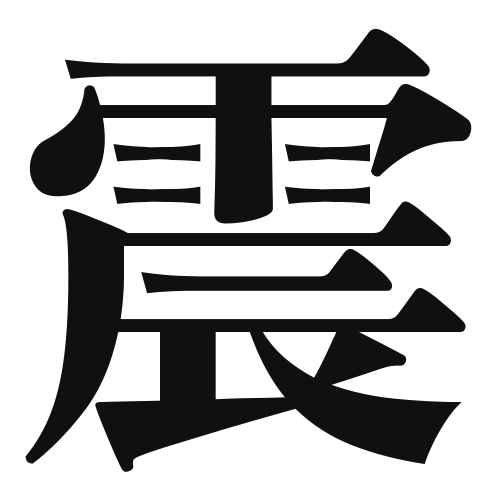1. Overview of Meaning
The kanji “震” (pronounced “shin” or “shindo”) primarily means “to shake” or “to tremble.” It is often associated with earthquakes and other forms of shaking or vibration.
2. Formation and Radical
The kanji “震” is a phonetic-ideographic character (形声文字), which means it combines both meaning and sound. The left part, “雨” (meaning “rain”), suggests a connection to natural phenomena, while the right part, “辰,” contributes to the pronunciation.
The radical of “震” is “雨,” which is commonly associated with weather-related concepts.
3. Examples of Usage
Common words and phrases that include “震” are:
- 震災 (しんさい, shinsai) – earthquake disaster
- 震動 (しんどう, shindou) – vibration
Example sentence in daily conversation:
「昨日の地震はとても強かったです。」
(The earthquake yesterday was very strong.)
4. Synonyms and Antonyms
Similar kanji with related meanings include:
- 揺れる (ゆれる, yureru) – to sway or shake, which implies a gentler movement compared to “震.”
Antonyms include:
- 静 (しず, shizu) – quiet or calm, representing the absence of shaking or disturbance.
5. Cultural and Historical Background
The kanji “震” has significant relevance in Japanese culture, particularly in relation to natural disasters like earthquakes, which are common in Japan. It is often used in discussions about safety and preparedness.
Proverbs and idiomatic expressions that include “震” may refer to the unpredictability of nature or the importance of resilience in the face of disasters.
